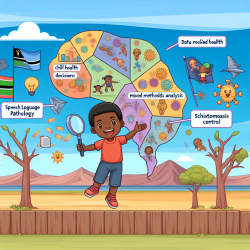Introduction
As practitioners dedicated to improving children's mental health outcomes, we must leverage data-driven insights to enhance our practices continually. A recent scoping review titled Professional characteristics, numbers, distribution and training of China's mental health workforce from 2000 to 2020 provides a comprehensive analysis of the mental health workforce in China, offering valuable lessons that can be applied globally. This blog will explore key findings from this research and discuss how practitioners can implement these insights to improve their skills and outcomes for children.
Key Findings from the Research
The scoping review highlights several critical aspects of China's mental health workforce over the past two decades:
- The number of psychiatrists increased by 139%, and psychiatric nurses by 340% from 2000 to 2020.
- There is a significant disparity in the distribution of mental health professionals between urban and rural areas.
- Standardized training programs for psychiatrists have been implemented, but similar programs for psychiatric nurses, clinical psychologists, and psychiatric social workers are lacking.
- Limited data on the numbers and characteristics of professionals who provide mental health services.
- The absence of nationally standardized training programs for non-psychiatric medical professionals and non-medical personnel.
Implementing Research Insights to Improve Practice
To improve outcomes for children, practitioners can implement the following strategies based on the research findings:
1. Advocate for Standardized Training Programs
One of the significant gaps identified in the research is the lack of standardized training programs for psychiatric nurses, clinical psychologists, and psychiatric social workers. Practitioners should advocate for the development and implementation of these programs to ensure consistent and high-quality care across all regions.
2. Address Workforce Distribution Disparities
The uneven distribution of mental health professionals between urban and rural areas is a critical issue. Practitioners can work with policymakers to develop incentives and support systems that encourage professionals to work in underserved areas, ensuring that all children have access to quality mental health care.
3. Utilize Data to Inform Practice
The research highlights the importance of collecting and analyzing data on the mental health workforce. Practitioners should prioritize data collection and use these insights to inform their practice, identify gaps, and implement evidence-based interventions. By doing so, they can ensure that their services are effective and tailored to the needs of the children they serve.
4. Promote Interdisciplinary Collaboration
Effective mental health care for children often requires a multidisciplinary approach. Practitioners should foster collaboration between different professionals, including psychiatrists, nurses, psychologists, and social workers, to provide comprehensive care. This collaboration can be facilitated through regular team meetings, shared training programs, and integrated care plans.
5. Invest in Continuing Education
Continuous professional development is crucial for maintaining high standards of care. Practitioners should invest in ongoing education and training opportunities to stay updated with the latest research and best practices. This investment will enhance their skills and improve outcomes for the children they serve.
Encouraging Further Research
The scoping review underscores the need for ongoing research to address the gaps in the mental health workforce. Practitioners should actively participate in research initiatives and collaborate with academic institutions to contribute to the evidence base. By doing so, they can help shape policies and practices that improve mental health outcomes for children.
Conclusion
By implementing the insights from the scoping review on China's mental health workforce, practitioners can enhance their skills and improve outcomes for children. Advocating for standardized training programs, addressing workforce distribution disparities, utilizing data to inform practice, promoting interdisciplinary collaboration, and investing in continuing education are all critical steps toward achieving this goal. Together, we can create a brighter future for children's mental health.
To read the original research paper, please follow this link: Professional characteristics, numbers, distribution and training of China's mental health workforce from 2000 to 2020: a scoping review.










